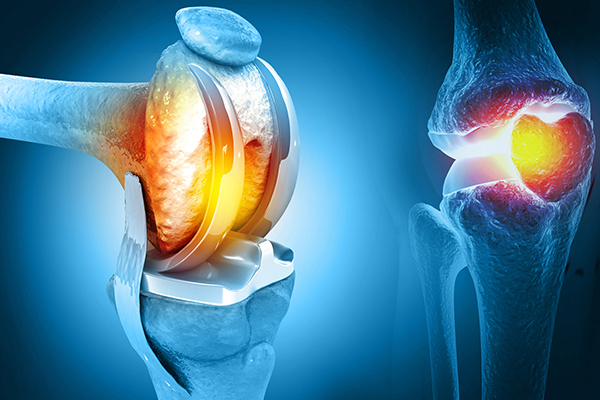
Knee replacement surgery is one of the most successful procedures, keeping millions of individuals in the US active despite severe arthritis. 1 Advancements in technology make it possible for the procedure to be done with minimally invasive techniques, resulting in better patient outcomes. Learn more about the various options available for this life-changing procedure.
Understanding Minimally Invasive Knee Replacement
Minimally invasive knee replacement utilizes small incisions and specialized surgical instruments, allowing for less tissue damage and faster healing. This approach can lead to reduced pain, shorter hospital stays, and a quicker return to daily activities. The various surgical techniques and technologies used include:
- Mako Robotic Partial Knee Replacement: During the surgery, a robotic arm assists the surgeon in executing the pre-planned surgical technique with a high level of precision. The robotic arm is guided by the surgeon, who maintains full control throughout the procedure. You may be a candidate for this procedure if arthritis is limited to only one or two compartments of the knee.
- Mako Robotic Total Knee Replacement: During this procedure, the robotic arm assists inthe complete removal of the damaged joint and replacement with artificial components.You may be a candidate for robotic total knee replacement if arthritis affects all three compartments of the knee.
- Computer Navigation for Total Knee Replacement: Computer navigation provides your surgeon with real time 3D images of your mapped knee and the surgical instruments during surgery. The data for the images are provided by infrared sensors fixed to the bones of the knee and surgical instruments, ensuring a high degree of accuracy and precision.
- Jiffy Knee Replacement:* This technique avoids cutting the quadriceps or VMO muscles around the knee. 2 Instead, specialized instruments gently lift and move the muscles aside, with only the skin and knee capsule being incised during the procedure. While it promises improved patient outcomes, long-term research on the Jiffy knee procedure is limited, making it essential to weigh the benefits and risks carefully. *SMOC does not offer this technique.
If you would like to learn more about what option is right for your specific knee condition, reach out to the experts at SMOC today. We take pride in evaluating, informing, and guiding our patients to their best treatment options!
Dr. Geoffrey Wright is a Board-Certified Orthopaedic Surgeon specializing in hip and knee joint replacement. He has dedicated his career to eliminating pain, increasing mobility, and providing a better quality of life for his patients. Dr. Wright has served as a U.S. Navy orthopedic surgeon and spent considerable time as a surgeon and faculty member at Naval Medical Center Portsmouth before joining the team at Sports Medicine & Orthopaedic Center located in Suffolk, Harbour View, and Chesapeake, Virginia.











